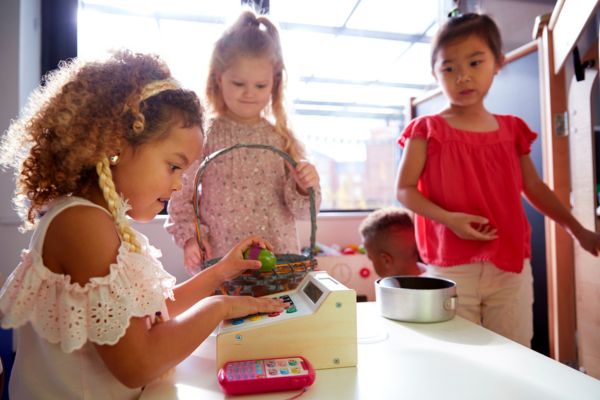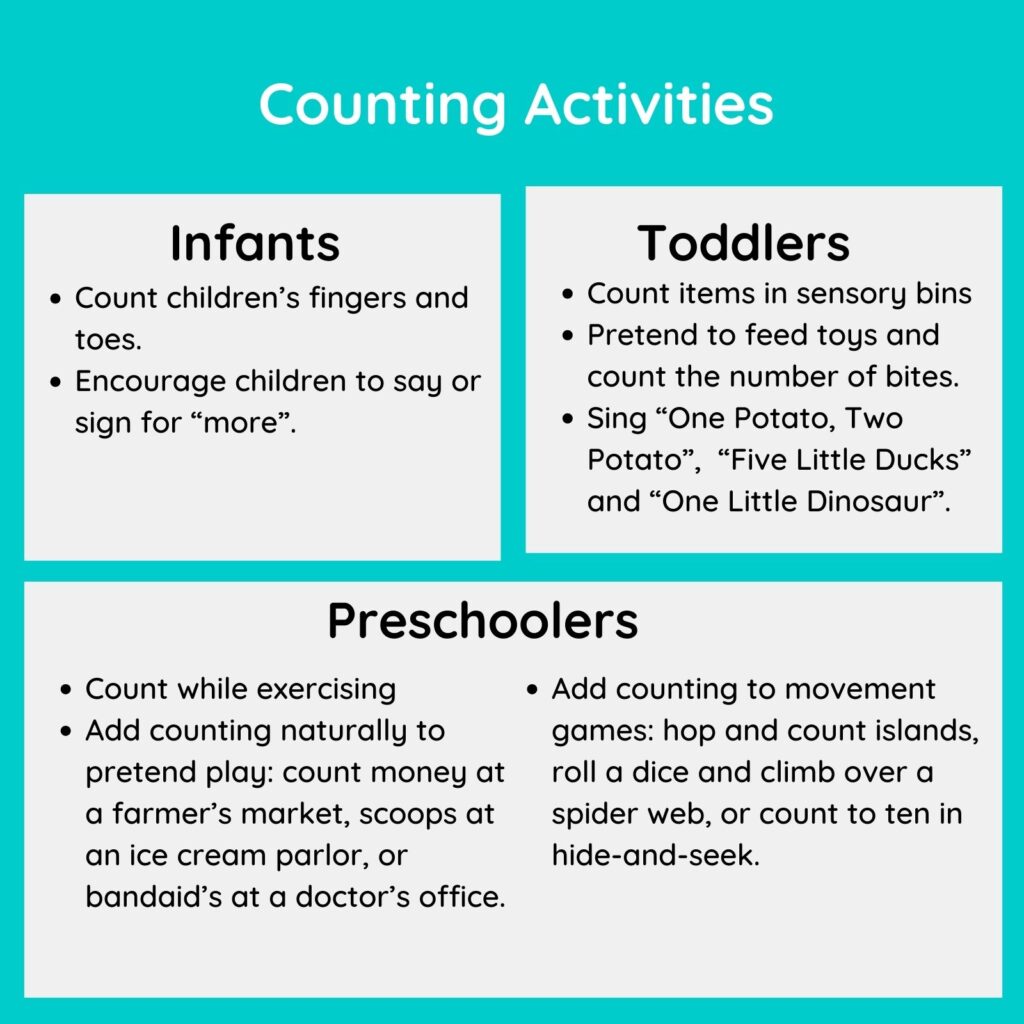
Whether we are counting push ups during an exercise routine, cash to pay for an ice cream, or minutes on the clock–counting is a very useful skill for everyday life. When teaching math or literacy skills to young children, one of the most important things that we can do is help children to understand the purpose of any given skill. When it comes to counting, we encourage caregivers to illustrate how this skill connects to real life, and then slowly work towards accuracy and applicability of the skill.
For example, while we are working with infants, we are still in the phase of exposing them to the topic. While we might not directly be counting with them to teach them the skill of counting, we can embed counting into the everyday play that is best for infant development. For example, we might hold a baby on our lap and count their tiny little fingers and toes while we snuggle with them. At this stage, attachment is the most important foundation for all future learning, so the sense of safety and love that the child feels in this moment will allow them to attentively take in the language of numbers attached to the tickling or warm sensation on their fingers and toes! Another way to work on early math concepts is to give children language to express more, less, or enough. For example, teaching young children infant sign language where they can sign for more is incredibly empowering for their sense of control at meal times, but also is an early math concept!
Mathematics and language are very closely connected, as children need to feel confident speaking about other topics before they might confidently rattle off numbers 1-10. Thus, as children enter their toddler years, we can continue to incorporate counting into every day play that children enjoy and that has to do with topics and materials that interest them, such as animals, trucks, nature and more. In our Goldfish Sensory Bin activity, we can spray paint recycled wine corks gold and place them in a sensory bin full of water. While children are engaged in this rich pretend play, we can invite them to count how many fish they can extract. While some toddlers might first shout with triumph: “1, 3, 10!”. This moment is indeed a triumph, because the child is applying language she has heard before and connecting it to the concept of counting. The adult can cheerfully model the correct language in return “Yes, I see you have three! 1, 2, 3!”, without correcting the child explicitly but through warm and responsive language expressed while playing together.
At Rayz Kidz, we believe that math should never be learned through quizzing or memorization, but should instead be embedded into playful activities that get children moving, thinking, and creating. With preschool aged children, we can continue to invite them to count items using a one-to-one correspondence (i.e. applicability), as well as count with accuracy, always through play. For example, we might use our counting skills to count out play money when we set up a “Farmer’s Market Pretend Play” area, which is perfect to also teach children about speaking kindly to others when we are buying lovely seasonal produce. Or, in our Spider Web Hop game, a simple spider web made of chalk becomes a life-sized board game, as children roll dice and hop along without getting stuck in the web! On the topic of spiders, let’s also make Itsy Bitsy Spiders out of play dough and plant stems, which is not only a great opportunity to count up to 8, but also to sing one of our favorite nursery rhymes! Check out the Rayz Kidz app to see how you can embed all types of skills naturally into your play!
